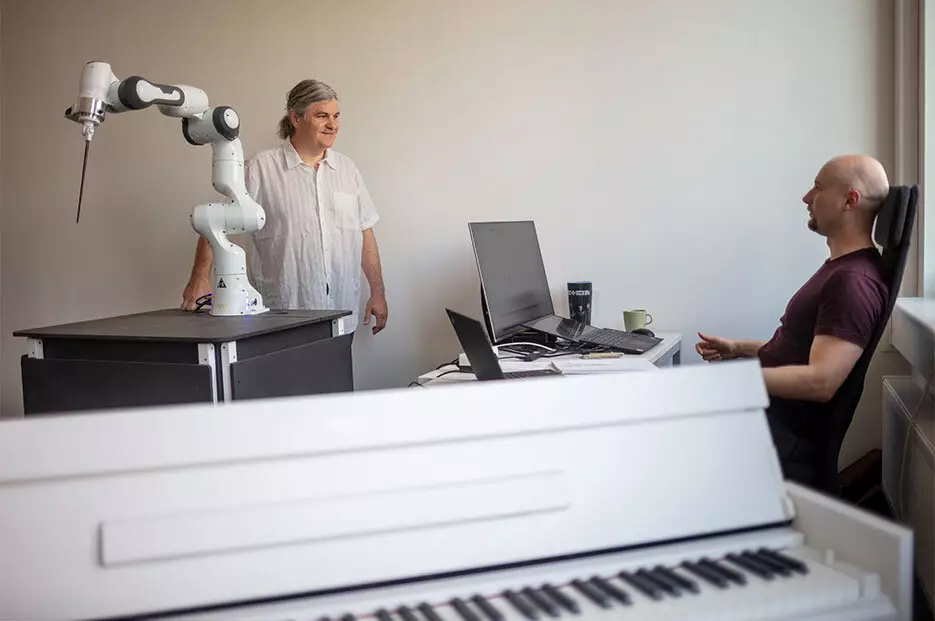In a groundbreaking event, a three-armed robot made its debut as a conductor in Dresden, Germany, bringing a futuristic twist to the age-old art of orchestral music. This innovative contraption has the capacity to mimic the nuanced movements of a human conductor, standing at the intersection of robotics and performance art. Clad with batons that resemble flickering “Star Wars” light sabers, the robot directed the esteemed Dresdner Sinfoniker orchestra in two remarkable performances that captivated audiences over the weekend.
Distinct from a traditional conductor, this robotic system possesses three flexible arm-like appendages, each programmed to move independently. The concept behind its design is to enhance orchestral dynamics through precise movements. The sophistication of its software allows it to discern beat timing and interpret dynamics, enabling a performance style tailored specifically to the intricacies of the compositions it conducts. One such piece, titled “Semiconductor’s Masterpiece,” was commissioned by composer Andreas Gundlach, highlighting how technology can give rise to new artistic expressions.
The inception of this robotic conductor traces back to innovative researchers at Dresden’s Technical University. Their pioneering work in collaborative robots, affectionately termed ‘cobots’, has redefined the boundaries of human-robot interaction. Gundlach, who played an instrumental role in developing this robot, emphasized that the aim was never to surpass human creativity but rather to enhance it. The collaborative nature of this project accentuates the importance of human input in the processes of robotic development, resulting in a piece that showcases both technical prowess and artistic vision.
Gundlach expressed his fascination with the implications of teaching a robot to embody the conductor’s role, stating that it illuminated the extraordinary artistry of human beings in a way he had never considered before. Training the robot to execute aesthetically pleasing arm movements required immense patience and precise calibration, a task that proved to be as challenging as it was enlightening. This undertaking evokes poignant questions about the nature of creativity and the potential for machines to contribute meaningfully to artistic endeavors.
Two of the robot’s arms also directed musicians through a complex piece, “#kreuzknoten,” by Wieland Reissmann, which featured a dynamic interplay of instruments playing at varying tempos. This remarkable experiment not only showcases the capabilities of robotic conductors but also poses intriguing inquiries into the future of orchestral performances.
As technology continues to advance, the role of robots in artistic spheres may transform our understanding of creativity, collaboration, and the essence of musical leadership. The juxtaposition of human talent and robotic precision presents an innovative approach to the symphony, presenting a fascinating glimpse into a harmonious future where technology and artistry coexist.

